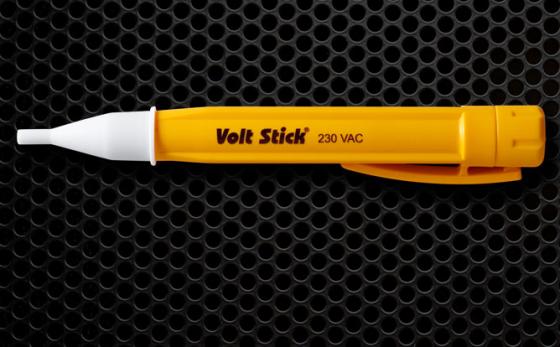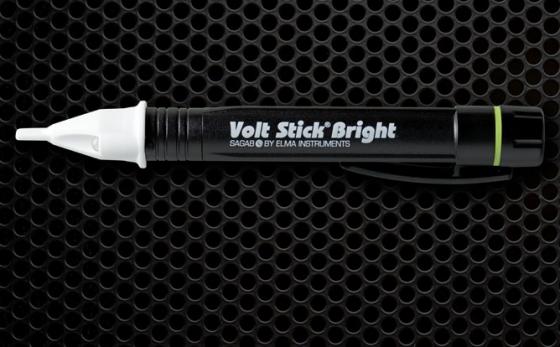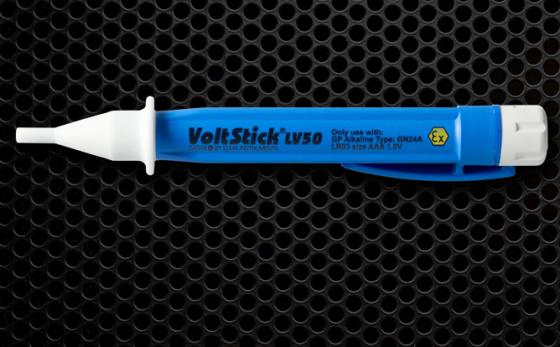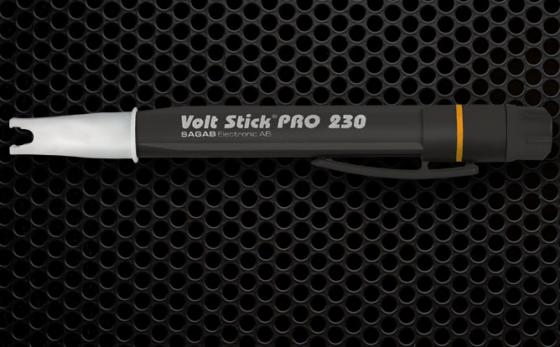What is a Volt Stick?
A Volt Stick - also sometimes referred to as a 'pen', 'wand', 'voltage indicator' or 'detector' - is a non-contact voltage tester which provides an instant indication of the presence of a live AC voltage in circuits, cables, power outlets and more.
What is a Volt Stick?
Just the size of a pen, a Volt Stick provides a visual (glowing LED) and/or audible (Beep) indication where a live voltage is detected in conducting materials - which may be either exposed or insulated.
Although 'volt stick' is the generic name given to a wide range of brands and devices, there is only one original Volt Stick range which carries the actual Volt Stick® registered brand; as the original inventor of the device some 30+ years ago, you might say we're the 'Hoover' of the voltage tester market!..
Volt Sticks are designed to provide a safe and immediate indication of 'live / not-live' voltage detection within electrical circuits in domestic, commercial and industrial environments.
Volt Stick® is the only range of non-contact voltage testers to offer a full spectrum of voltage ranges and functionality. For instance, together with our standard 230v AC models, we also offer an ATEX-approved 50v low voltage version used by many of the leading utilities providers to confirm a safe working environment for their engineers, as well as Volt Stick® 110v options for building site temporary supplies and for use in the United States.
How to safely use a Volt Stick
The function of the Volt Stick is to ensure a safe work environment and to confirm live / not-live equipment and surfaces. However, to ensure safe and reliable test reading, we always recommend following these simple safe-use guidelines:
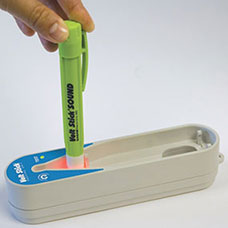 1. Always verify your Volt Stick is functioning correctly before use
1. Always verify your Volt Stick is functioning correctly before use
Before using a Volt Stick to detect for 'unknown' live voltages, always verify the tester is working correctly on a known live voltage source (this may be a cable, switch or power socket for example, which you are fully aware is carrying a live voltage).
In some circumstances (such as working outside /field engineers), there may be no verified live voltage carrier available for pre-testing. For this purpose, we have developed our unique VSPU1 Volt Stick Proving Unit - a portable, battery-powered Volt Stick verifier.
2. Use the correct rated Volt Stick for your application
Make sure that your Volt Stick is rated for the correct voltage range being tested. Use our Volt Stick® Product Comparison Chart to check the voltage range of your Volt Stick® model.
In addition, ensure that your voltage tester is fully-compliant and safety tested. There are many inferior products on the market which are not fully tested and are likely to provide inaccurate test results.
Volt Sticks® are the only range of voltage testers to meet the most stringent European and International Safety standards.

3. Capacitive Volt Sticks have some limitations
In order for a Volt Stick to operate effectively and correctly, the device relies upon capacitance between the Volt Stick device and ground (ie. through your hand/body). If this path is broken in some way, the Volt Stick is likely to function incorrectly.
In order to avoid such testing errors, find an installation ground that you can touch when using the Volt Stick detector.
Any Questions?
If you have any questions regarding the safe use of your Volt Stick® device, or in choosing the correct model for your application, please contact the Volt Stick team by emailing us at info@voltstick.com


